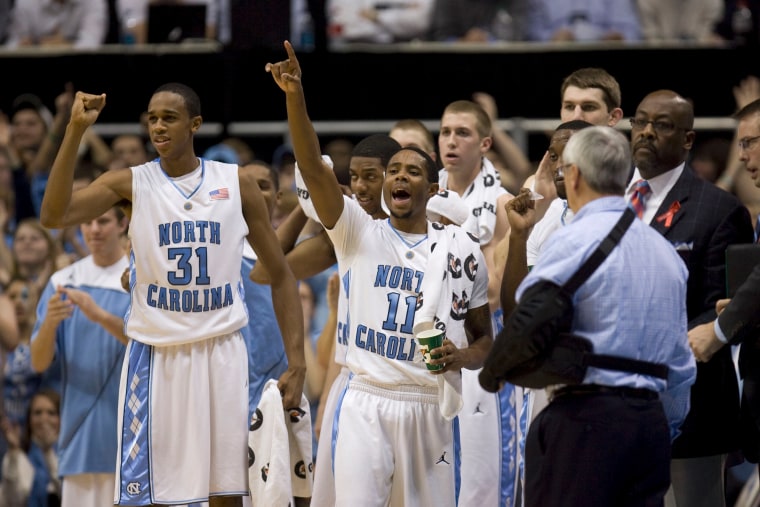North Carolina tops our list of off-the-court winners for the third straight year.
The North Carolina Tar Heels won't be defending their title in this month's NCAA tournament, but when it comes to team value they can claim bragging rights for another year.
The Tar Heels top our third annual ranking of college basketball teams with a value of $29 million, up 12 percent from last year when they also claimed the No. 1 spot. Their $17.7 million profit last season was greater than any other team and 70 percent higher, on average, than the rest of the top 20. But it's what the Tar Heels were able to do with that money that makes them the most valuable team.
Unlike professional teams, which can be bought and sold on the open market, college teams have value in terms of what kind of dividends they pay to their stakeholders. "Dividend" money is what's left for the team's university (for academic purposes, including scholarship payments for players) and athletic department (to support non-revenue sports) after the cost of running the basketball operation in question. It also includes what's generated for its conference (the distribution of tournament revenue) and the community around the university (estimated incremental spending by visitors to the county that's attributable to the program). In our scoring system, the first two factors were given the most weight, while county revenue was given the least.
The notoriety of the Tar Heels basketball team, which last season won its second national championship in five years, is the driving force behind the athletic department's apparel deal with Nike and its licensing program, which together added $5.8 million to university coffers last year to support academic programs. North Carolina ranked sixth in the nation in merchandise sales last year, according to the Collegiate Licensing Company, and was the only institution in the top 10 that is not a football powerhouse.
Travel 11 miles over to Duke's campus and you'll find a different story. For the second straight year the Blue Devils dropped three spots in our rankings, to 11th overall. Duke's $16.4 million team value is hamstrung by a bloated operating budget of $13.5 million, 50 percent greater than any other basketball team and twice the average of the 20 most valuable teams. That means there's less dividend money to support academics and the rest of the athletic department.
In order to accurately make comparisons between basketball teams we standardized revenue and expense streams, since the methods of reporting to the Department of Education are often inconsistent from school to school. Duke reported a loss of more than $2 million last season but a closer look reveals that when accounting for other items that are applicable to basketball and captured elsewhere in internal reporting, like seating "donations" required in order to purchase season tickets, that the team actually made $5.6 million.
Moving up on our list is the Illinois Fighting Illini, which jumped two sports to rank fifth overall and first among Big Ten Conference teams, with a value of $20.8 million. The Illini's profit grew 9 percent last season to $13.9 million, while revenue increased at the same rate, to $18.7 million. The team's $7.2 million in gate receipts and $691,000 in concession income were both up last year, while seating donations were off only 2 percent, to $4.2 million. That's an impressive total at a time when many athletic departments saw fundraising scale back considerably on account of the recession.
New to the list: the Minnesota Golden Gophers. Don't laugh. While they don't exactly have a reputation as stalwarts on the hardwood, the Gophers have some big advantages on their side. As the only Division 1 athletic department in the state, they enjoy one of the largest local fan bases in the U.S. Also, just three years into his role as head coach, Tubby Smith has led the team to consecutive NCAA tournaments for the first time in 15 years (though officially it's the first time in school history, since those earlier appearances were vacated by the NCAA). Minnesota ranks 17th with a value of $13.5 million.
Dropping from the list are a pair of Atlantic Coast Conference teams that find themselves in a situation that's opposite of that of the Gophers: too much competition vying for basketball dollars. North Carolina State and Wake Forest, whose profit was halved last year, prove once more that when it comes generating green in the Old North State, there's simply no substitute for Tar Heel blue.
